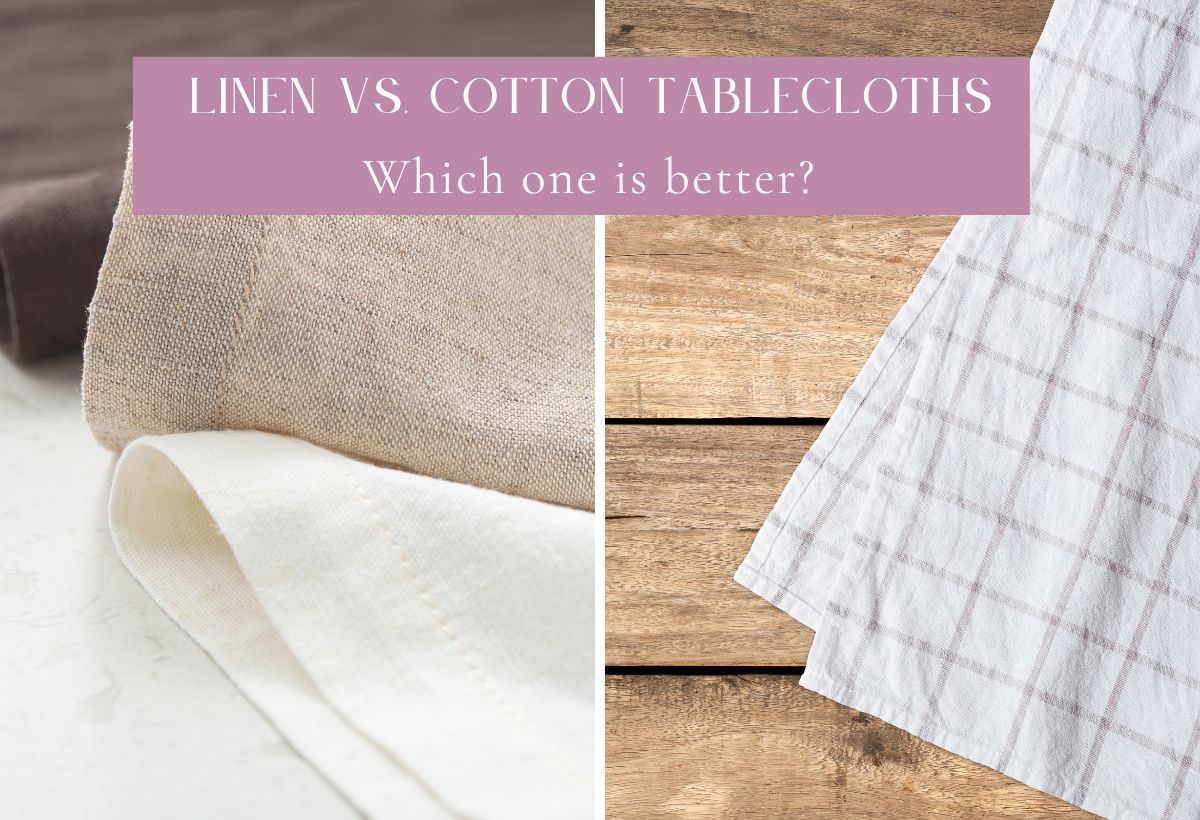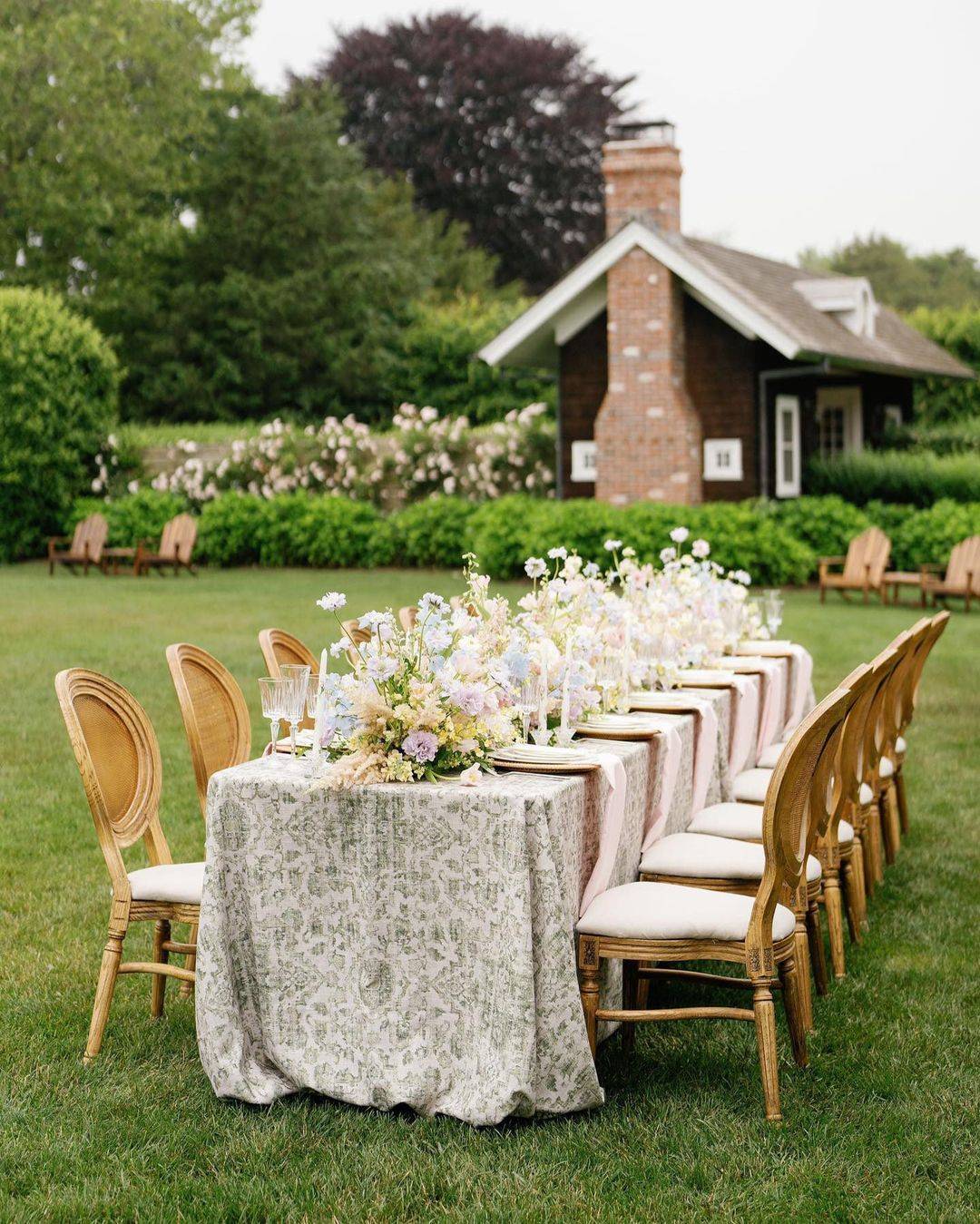
Comparing Linen vs. Cotton Tablecloths: Which one is better?
Choosing the right tablecloth can elevate your dining experience and add a touch of elegance to your setting. Among the myriad options available, linen tablecloths and cotton ones stand out as popular choices. In delving into this analysis, examining these two fabrics side by side will assist you in making a well-informed choice.
1. Natural Origins: The Fabric Foundation
Both materials originate from natural sources, making them environmentally friendly options. Linen is derived from the flax plant, known for its sustainable growth and minimal environmental impact. On the other hand, cotton, sourced from the cotton plant, is widely cultivated globally.
2. Texture and Feel: A Tactile Journey
One of the key distinctions between them lies in their texture and feel. Linen boasts a slightly coarse texture, providing a rustic charm that many find appealing. This fabric becomes softer and more supple with each wash, offering a unique blend of durability and comfort.
Conversely, cotton is known for its smooth and soft feel from the start. While it may lack the initial textural intrigue, its gentle touch and comfort make it a favourite among those who prioritize a softer dining experience.
3. Breathability: Stay Cool or Cozy?
When it comes to breathability, linen emerges as the frontrunner. Its inherent fibers enable unrestricted air circulation, rendering it a suitable option for warmer climates. The natural linen tablecloth can help keep your dining area cool and comfortable, even during the hottest seasons.
Cotton, while breathable, may not match flax cloth in terms of keeping things cool. However, its ability to retain warmth makes it a suitable option for cooler environments. The choice between them may depend on the climate of your region and personal preferences for tablecloth functionality.
4. Absorbency: The Battle Against Spills
In the inevitable event of spills, the absorbency of your tablecloths online becomes a crucial consideration. Linen’s absorbent nature allows it to wick away moisture effectively, preventing spills from spreading and potentially staining your table. This quality makes it a practical choice for households with a penchant for culinary mishaps.
Cotton, too, exhibits good absorbency, though not on the same level as linen. Its ability to soak up spills quickly can save your table from unwanted stains. However, frequent spills might necessitate more immediate cleanup with a cotton tablecloth compared to its counterpart.
5. Maintenance: Ease of Care
Maintaining the pristine appearance of your tablecloth is a universal concern. Linen, while durable, requires a bit more care than cotton. It is advisable to wash them in cold water and avoid using bleach to preserve their natural color and texture. Additionally, they should be air-dried or tumble-dried on low heat to prevent excessive wrinkling.
Cotton, on the other hand, is relatively low-maintenance. It can withstand regular machine washing and drying, simplifying the cleaning process. The forgiving nature makes it a practical choice for those seeking a hassle-free tablecloth option.
Conclusion: Choosing Your Perfect Tablecloth
In the linen vs. cotton tablecloth debate, there is no one-size-fits-all answer. Your decision should align with your lifestyle, climate, and aesthetic preferences. If you prioritize breathability and a rustic texture, and don’t mind a bit of extra care, linen might be your fabric of choice. On the other hand, if you seek a soft, low-maintenance option with diverse style possibilities, cotton could be the ideal companion for your dining table.
In the end, whether you opt for the timeless charm of linen tablecloths or the versatile appeal of cotton, your choice will undoubtedly contribute to the overall ambiance of your dining space. So, weigh the factors that matter most to you, and let your tablecloth set the stage for many delightful meals to come.

